Anza-Borrego Desert State Park
- February 15, 2024
- 0 comment
Explore Anza-Borrego Desert State Park’s vast landscapes, rich biodiversity, and outdoor adventures in California’s largest state park. Deserts, with their stark beauty and extreme environments, captivate the imagination like no other landscapes. Nestled in the heart of Southern California, Anza-Borrego Desert State Park stands as a testament to the rugged, unspoiled charm of the desert.
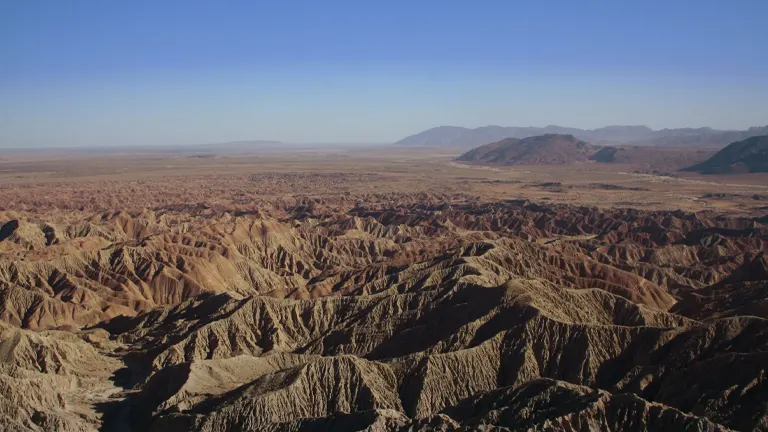
As the largest state park in California, it offers an unparalleled window into vast landscapes, rich biodiversity, and a plethora of outdoor adventures, inviting visitors to explore its mysteries and marvel at its natural wonders.
Characterizing Features of Anza-Borrego Desert State Park
Anza-Borrego Desert State Park, renowned for its natural beauty and unique landscapes, stands as a jewel in the crown of California’s state park system. Here are its characterizing features:
- Vast Landscapes: Spanning over 600,000 acres, Anza-Borrego is the largest state park in California. Its vast landscapes encompass a variety of terrains, from flat, arid desert floors to rugged mountains, providing a dramatic backdrop for exploration and photography.
- Spectacular Wildflower Blooms: Each spring, the park transforms into a canvas of vibrant colors with its spectacular wildflower blooms. Species such as the desert sunflower, sand verbena, and desert lily carpet the valley floors, drawing visitors from across the globe.
- Geological Formations: The park is home to remarkable geological formations, including the Borrego Badlands, Tectonic Gorges, and numerous slot canyons. These features offer a glimpse into the earth’s past and present seismic activities.
- Cultural Sites: Anza-Borrego has a rich cultural history, evidenced by the ancient pictographs and petroglyphs left by the Native American tribes who once inhabited the region. These sites are sacred windows into the lives of the park’s earliest residents.
- Dark Sky Community: Designated as an International Dark Sky Park, Anza-Borrego provides one of the best locations in California for stargazing, thanks to its minimal light pollution. The Milky Way and countless constellations are visible to the naked eye, offering a breathtaking night-time spectacle.
History of Anza-Borrego Desert State Park
The history of Anza-Borrego Desert State Park is as layered and complex as its landscapes. The area has been home to various Native American tribes for thousands of years, with the Kumeyaay, Cahuilla, and Cupeño peoples among its earliest known inhabitants. These tribes thrived by harnessing the desert’s resources, leaving behind a rich archaeological legacy.

In the 16th century, Spanish explorers traversed the region, followed by Mexican land grantees in the 19th century. However, it was not until the 20th century that efforts to protect and preserve this unique ecosystem led to the establishment of Anza-Borrego as a state park in 1933. Named after Spanish explorer Juan Bautista de Anza and the Spanish word “borrego,” meaning bighorn sheep, the park has since become a sanctuary for both natural and cultural preservation. Its history is a testament to the resilience of its landscapes and the conservation efforts that have allowed its beauty to be accessible to all.
Unique Ecosystem of Anza-Borrego Desert State Park
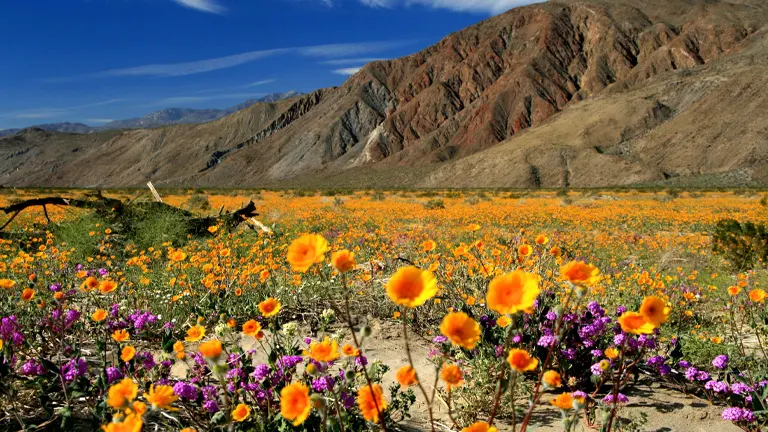
Anza-Borrego Desert State Park hosts an exceptionally diverse ecosystem, a testament to nature’s adaptability. This vast area supports a variety of life forms that have evolved to thrive in the extreme conditions of the desert environment. The park’s ecosystem is characterized by its resilience and diversity, encompassing everything from low-lying desert areas to high mountain regions. Such variation in altitude and terrain results in distinct microclimates, each supporting unique communities of plants and animals. Rainfall patterns, though infrequent and unpredictable, play a crucial role in shaping the ecosystem. The occasional downpours trigger spectacular spring wildflower blooms, transforming the desert floor into a vibrant tapestry of colors. These blooms not only provide a visual feast but also support a multitude of pollinators, essential for maintaining the health of the desert ecosystem.
Location of Anza-Borrego Desert State Park
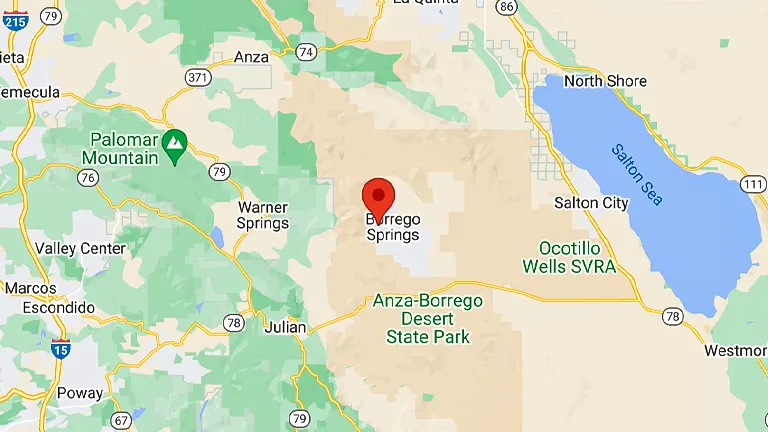
Anza-Borrego Desert State Park is located in Southern California’s Colorado Desert, spanning San Diego, Imperial, and Riverside counties. Just a two-hour drive east of San Diego, this park serves as a convenient natural getaway. Positioned between the Mojave and Sonoran Deserts, it boasts varied landscapes from badlands to palm oases, offering stunning scenery and acting as a vital wildlife corridor.
Here are some specific directions and tips for reaching Anza-Borrego Desert State Park:
- From San Diego:
- Take I-8 East towards El Centro.
- Exit at CA-79 North (Julian) and follow it to Santa Ysabel.
- At Santa Ysabel, turn right onto CA-78/CA-79 and follow it until it splits.
- Take CA-78 East towards Julian, and continue through Julian towards Ramona.
- From Ramona, follow CA-78 East into the park.
- From Los Angeles:
- Take I-10 East towards San Bernardino.
- Merge onto CA-60 East towards Beaumont.
- From Beaumont, take CA-79 South towards Warner Springs.
- Turn left onto San Felipe Road (S2) towards Scissors Crossing, then continue straight onto CA-78 East into the park.
- From Riverside:
- Take I-215 South towards Temecula.
- Merge onto I-15 South, then take the exit for CA-79 South towards Indio.
- Follow CA-79 South through Warner Springs, then turn left onto San Felipe Road (S2) and continue as it becomes CA-78 East into the park.
- From Palm Springs:
- Take I-10 West to CA-86 South towards Brawley.
- Merge onto CA-78 West in Brawley and follow it through the Imperial Valley and into the park.
Conservation and Recreation in Anza-Borrego Desert State Park
The dual mission of conservation and recreation within Anza-Borrego Desert State Park underscores its significance as a natural resource and a public treasure. Conservation efforts are crucial in safeguarding the park’s unique biodiversity, geological features, and archaeological sites against the pressures of climate change, pollution, and human intrusion. These initiatives ensure the protection of its vast landscapes and the myriad species that call the park home, allowing future generations to enjoy and learn from these natural wonders.

Recreation, in harmony with conservation, plays a vital role in fostering a deeper appreciation and understanding of the desert environment. By offering a wide range of outdoor activities, the park encourages healthy, sustainable interaction with nature. This balanced approach promotes environmental stewardship among visitors, highlighting the importance of preserving natural habitats while enjoying the physical and mental benefits of outdoor recreation.
Diverse Vegetation and Plant Species in Anza-Borrego Desert State Park
Anza-Borrego Desert State Park’s vegetation is a mirror to its ecological diversity, hosting an array of plant species adapted to the harsh desert climate. Here are some notable examples:
- Ocotillo (Fouquieria splendens): The ocotillo’s striking silhouette, with its tall, spindly branches that burst into fiery red blooms after rain, is emblematic of the desert landscape.
- Creosote Bush (Larrea tridentata): This hardy plant is a cornerstone of the desert ecosystem, known for its resilience and the distinctive smell it releases after rainfall.
- Cholla Cactus (Cylindropuntia): The park is home to several cholla species, including the teddy bear and jumping cholla, recognized by their dense cover of spines that can detach easily.
- Joshua Tree (Yucca brevifolia): Although more commonly associated with the Mojave Desert, the Joshua tree’s presence in the higher elevations of Anza-Borrego signifies the diversity of the park’s habitats.
- Palm Trees in Oases (Washingtonia filifera): Native California fan palms thrive in the park’s few oases, providing a lush contrast to the surrounding desert and serving as vital habitats for wildlife.
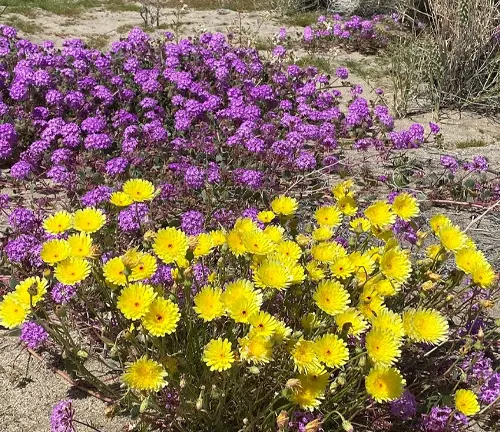
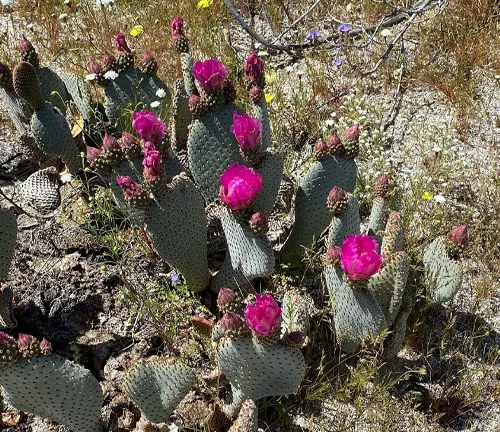
Fauna in Anza-Borrego Desert State Park
Anza-Borrego Desert State Park is a haven for a wide range of animals adapted to life in the desert. Here are some of the notable species:
- Peninsular Bighorn Sheep (Ovis canadensis nelsoni): Perhaps the most iconic inhabitants, these sheep are adept climbers, often spotted on rocky slopes and canyons.
- Desert Tortoise (Gopherus agassizii): An emblem of desert resilience, the desert tortoise navigates the harsh terrain, relying on sparse water sources for survival.
- Coyote (Canis latrans): As one of the top predators, coyotes play a crucial role in maintaining the ecological balance by controlling rodent populations.
- Greater Roadrunner (Geococcyx californianus): This fast and agile bird is famous for its speed and distinctive appearance, embodying the spirit of the desert.
- Kit Fox (Vulpes macrotis): The smallest of North American canids, the kit fox is known for its large ears, which help dissipate heat and detect prey.
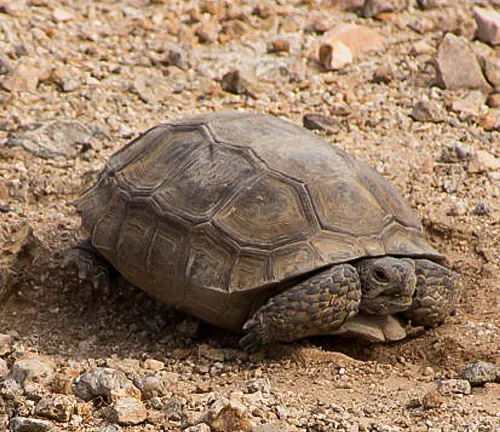
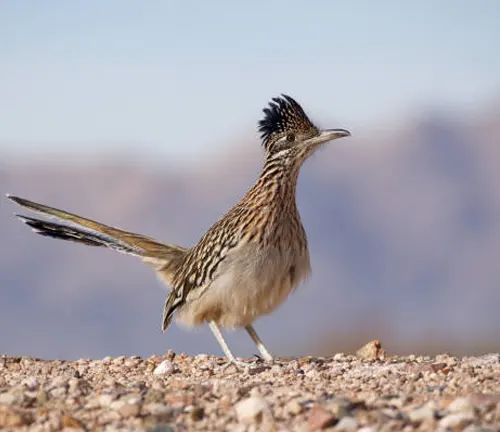
Attractions in Anza-Borrego Desert State Park
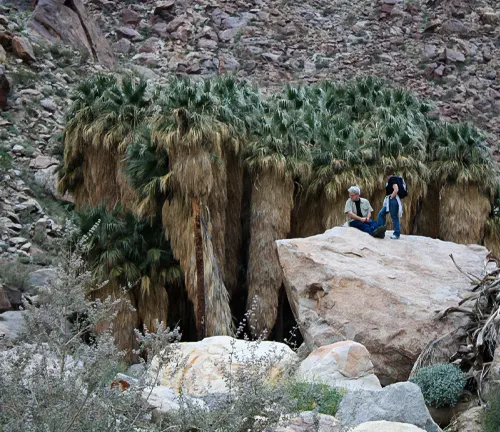
Borrego Palm Canyon: This is one of the most popular hiking destinations within the park, leading to a stunning palm oasis. It’s an excellent example of a desert microhabitat, where water allows lush palm trees to thrive amidst the arid surroundings. The trail also offers opportunities to spot the Peninsular Bighorn Sheep and various desert flora.
Fonts Point: Often referred to as the “Grand Canyon of the East,” Fonts Point provides a breathtaking overlook of the Borrego Badlands. This vast landscape of eroded hills and gullies is a testament to the natural forces of water and wind erosion over millions of years, offering a dramatic perspective on the desert’s geological history.
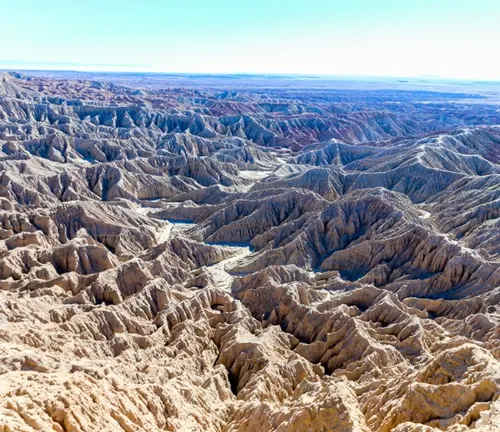
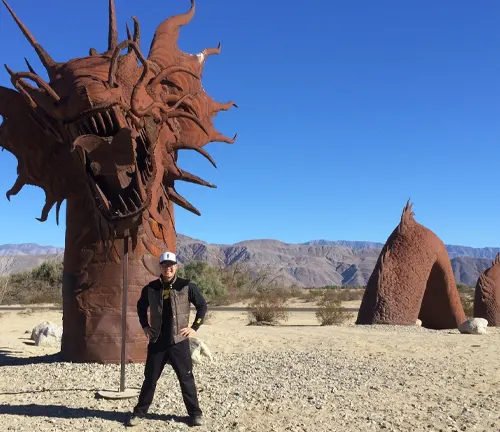
Galleta Meadows: Spread across Borrego Springs, Galleta Meadows features over 130 metal sculptures created by artist Ricardo Breceda. These sculptures, ranging from prehistoric mammals to fantastical dragons, not only add an artistic layer to the desert landscape but also invite visitors to explore the region’s prehistoric past and its evolution.
The Slot: This narrow siltstone canyon offers an adventurous hike that showcases the power of natural erosion in shaping the desert landscape. Walking through The Slot, visitors can experience the park’s geological diversity up close, from its smooth canyon walls to the various layers of sediment that tell the story of the earth’s past.


Visitor Center: Partially buried underground to blend with its surroundings and minimize environmental impact, the Visitor Center is a wealth of information on the park’s natural and cultural resources. Exhibits and knowledgeable staff provide insights into the area’s ecology, wildlife, and history, making it an essential first stop for any visitor.
Hellhole Canyon: This trail leads to Maidenhair Falls, a hidden waterfall oasis. The hike through Hellhole Canyon reveals the adaptability of desert flora and the unexpected pockets of water that sustain life in such a harsh environment.
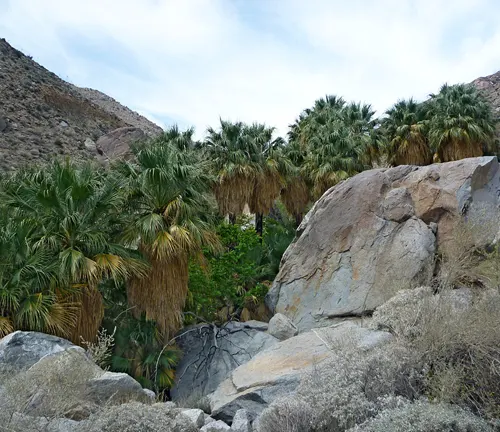
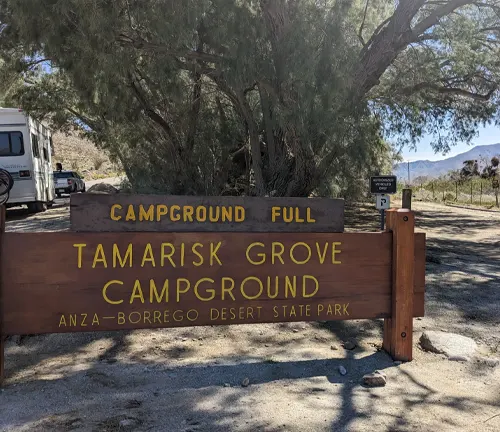
Tamarisk Grove: Once a campground, Tamarisk Grove serves as a gateway to several trails and features some of the park’s most beautiful wildflower displays in the spring. It’s a testament to the park’s ecological diversity and the seasonal transformations that occur within the desert.
Cactus Loop Trail: Near the Visitor Center, this easy loop trail offers an up-close look at the various cactus species that inhabit the Colorado Desert, including the ocotillo, barrel cactus, and cholla. It’s an educational walk that highlights the adaptations these plants have made to survive in the desert climate.

Recreational Activities in Anza-Borrego Desert State Park
Anza-Borrego Desert State Park is a playground for nature lovers and adventure seekers alike, offering a wide range of recreational activities:
- Hiking: With over 100 miles of trails, hiking in Anza-Borrego allows visitors to explore diverse terrains, from desert plains to mountainous areas. Trails range from easy walks, such as the Borrego Palm Canyon Nature Trail, to more challenging hikes like the trek to Villager Peak. Hiking offers an intimate way to learn about the desert’s ecology, geology, and the adaptations of plants and animals to this arid environment.
- Camping: The park offers various camping options, from developed campgrounds with amenities to backcountry sites for a more rugged experience. Camping in Anza-Borrego provides a unique opportunity to immerse oneself in the desert landscape, experience the night sky free from light pollution, and understand the importance of minimal impact practices to preserve natural habitats.
- Stargazing: Designated as an International Dark Sky Park, Anza-Borrego is one of the best places in Southern California for stargazing. The clear, dark skies offer breathtaking views of stars, planets, and the Milky Way, making it an excellent activity for learning about astronomy and the significance of dark sky conservation.
- Wildlife Watching: The park’s diverse ecosystems support a variety of wildlife, including the Peninsular Bighorn Sheep, desert tortoises, and myriad bird species. Wildlife watching encourages visitors to practice patience and quiet observation, fostering a deeper appreciation for the park’s biodiversity and the challenges these animals face in a desert environment.
- Photography: With its stunning landscapes, unique geological formations, and vibrant wildflower blooms, Anza-Borrego provides endless opportunities for photographers. This activity not only allows for creative expression but also raises awareness of the beauty and fragility of natural landscapes, highlighting the importance of conservation.
- Off-roading: Certain areas of the park are accessible to off-road vehicles, offering an adventurous way to explore the vast desert landscapes. While engaging in this activity, visitors learn about the park’s guidelines for off-roading to protect sensitive habitats and ensure the preservation of the park’s natural resources.
- Guided Tours: Ranger-led programs and guided tours provide educational insights into the park’s natural history, cultural heritage, and conservation efforts. These tours offer a structured way to explore the park, making complex ecological and geological concepts accessible and engaging for all ages.
- Cycling: The park’s roads and designated trails offer cyclists a chance to traverse through diverse desert scenery. Cycling in Anza-Borrego is a great way to cover more ground than hiking, offering a different perspective on the park’s vastness and the adaptability of life in arid conditions.
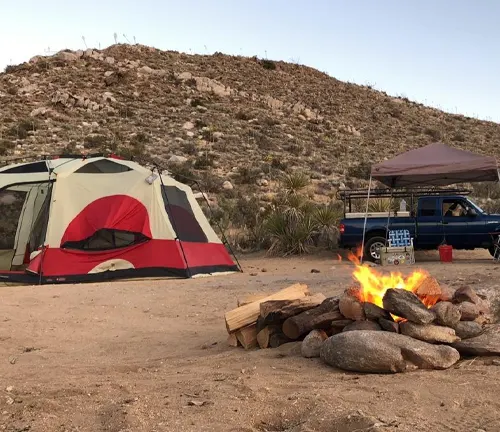
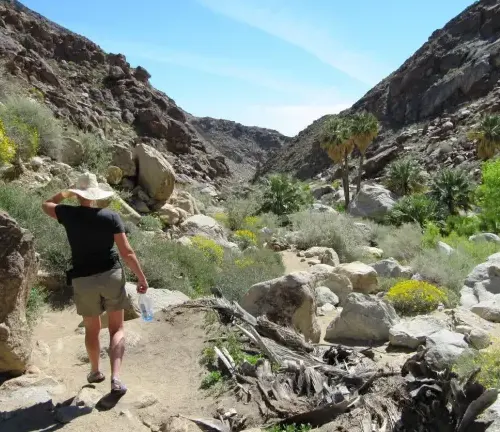
Different Facilities and Amenities in Anza-Borrego Desert State Park
To enhance the visitor experience, Anza-Borrego Desert State Park provides a variety of facilities and amenities:
- Visitor Center: The Anza-Borrego Desert State Park Visitor Center is an essential starting point for any visit. Built into the side of a hill to minimize environmental impact, the center provides extensive educational exhibits on the park’s geology, ecology, and history. Staff and volunteers are on hand to offer recommendations, answer questions, and provide interpretive programs that enrich visitors’ understanding of the desert.
- Campgrounds: The park offers several campgrounds, including developed sites with amenities like restrooms and showers, as well as primitive camping areas for those seeking a more rugged experience. Camping in the park allows visitors to immerse themselves in the natural beauty of the desert, experience the night sky, and learn the principles of Leave No Trace to protect the environment.
- Picnic Areas: Scattered throughout the park, picnic areas provide a comfortable setting for visitors to enjoy meals with breathtaking views of the desert landscape. These areas are designed to blend with the natural environment, encouraging visitors to relax and reflect on the beauty of the desert while minimizing their impact on the surrounding habitat.
- Hiking Trails: With over 100 miles of trails, the park caters to hikers of all abilities, from short nature walks to challenging backcountry adventures. Trails are marked and offer informational signage on the local flora, fauna, and geological features, serving as outdoor classrooms that invite exploration and learning about the desert ecosystem.
- Interpretive Exhibits and Programs: Throughout the park, interpretive exhibits and ranger-led programs provide insights into the unique aspects of the desert environment, from its ancient geological history to the adaptations of plants and animals that thrive here. These programs are designed to engage visitors of all ages in conservation education and foster a deeper appreciation for natural resources.
- Observation Areas: Designated observation areas, such as the scenic overlooks at Fonts Point and Vista del Malpais, offer panoramic views of the park’s diverse landscapes. These areas are equipped with interpretive signage that explains the visible geological formations and vistas, enriching visitors’ knowledge of the natural forces that have shaped the region.
- Nature Trails: Several nature trails, complete with educational signage, allow visitors to learn about the desert’s plant and animal life in an accessible and engaging way. These trails are an excellent opportunity for families and individuals to gain a closer look at the park’s biodiversity and the ecological relationships that sustain it.
- Accessible Facilities: The park strives to be accessible to all visitors, with features like wheelchair-accessible trails, campsites, and restrooms. These facilities ensure that everyone can enjoy and learn about the desert, regardless of physical ability.
Tips and Advice for Visiting Anza-Borrego Desert State Park
To ensure a memorable and safe visit to Anza-Borrego Desert State Park, consider the following tips:
- Plan Your Visit During Cooler Months: The desert can be extremely hot, especially in summer. Visiting from November to March allows you to enjoy milder temperatures and potentially witness the spectacular wildflower bloom that follows the winter rains. This timing also offers a lesson in the desert’s adaptability and seasonal rhythms.
- Stay Hydrated: The arid desert climate means you’ll lose more water through perspiration than you might expect, even in cooler weather. Carrying and consuming plenty of water is crucial to prevent dehydration. This practice underscores the importance of water in sustaining life in such a harsh environment.
- Respect Wildlife and Plant Life: The park is home to diverse species that have adapted to the extreme desert conditions. Maintain a safe distance from wildlife and do not disturb plants. This respect for the natural inhabitants emphasizes the importance of conservation and the role each species plays in the ecosystem.
- Practice Leave No Trace Principles: Minimize your impact on the natural environment by packing out all trash, staying on designated trails, and camping in designated areas. Adhering to Leave No Trace principles helps preserve the park’s pristine condition and ensures its beauty and biodiversity remain for future visitors.
- Prepare for Remote Conditions: Many areas of the park are remote and lack cell service. Plan your route, inform someone of your itinerary, and carry a map and compass or GPS. This preparation is a lesson in self-reliance and the importance of respecting the challenges posed by natural landscapes.
- Check Road and Weather Conditions: Some park areas are accessible only by high-clearance or 4WD vehicles, and roads can be impassable after rain. Checking conditions ahead of time can prevent unexpected challenges and teach the importance of adapting to the desert’s variable conditions.
- Bring Sun Protection: The desert sun can be intense, even in cooler months. Sunscreen, a wide-brimmed hat, and sunglasses are essential to protect against sunburn and heat-related illnesses, highlighting the need for personal health and safety in extreme environments.
- Use the Visitor Center: Stop by the park’s visitor center for maps, current conditions, and recommendations from staff. The center is a valuable resource for learning about the park’s features, wildlife, and history, enhancing your appreciation and understanding of the desert.
- Be Prepared for Nighttime Temperatures: Desert temperatures can drop significantly after sunset. Bringing appropriate clothing and gear for cooler evenings ensures comfort and safety, offering a practical lesson in the desert’s diurnal temperature variations.
Recommendation
For those visiting Anza-Borrego Desert State Park for the first time, a visit to the Visitor Center is highly recommended. It provides a comprehensive introduction to the park’s geography, ecology, and history, helping you make the most of your visit. Additionally, considering a guided tour or ranger-led program can enrich your experience, offering insights into the park’s unique features and conservation efforts.
Conclusion
Anza-Borrego Desert State Park is a treasure trove of natural wonders, from its vast landscapes and diverse ecosystems to its rich cultural heritage. Whether you’re drawn by the call of adventure, the pursuit of knowledge, or simply the need to connect with nature, this park offers something for everyone. By following the tips and advice provided, visitors can ensure a rewarding and respectful exploration of one of California’s most majestic natural spaces.
FAQs
- What is the best time of year to visit Anza-Borrego Desert State Park?
The best time to visit is from November to March when the weather is cooler and the wildflowers may be in bloom. - Are pets allowed in the park?
Yes, pets are allowed in most campgrounds, picnic areas, and roads within the park, but they must be leashed and are not permitted on trails or in wilderness areas. - Can I camp anywhere in the park?
While Anza-Borrego offers both developed campgrounds and open camping areas, camping is allowed only in designated areas to protect the park’s resources. - Do I need a reservation to camp?
Reservations are recommended for developed campgrounds, especially during the peak season. Primitive camping areas are available on a first-come, first-served basis. - Is there an entrance fee for the park?
There is no entrance fee for most of Anza-Borrego Desert State Park, but some campgrounds and day-use areas may charge a fee. - Are there any guided tours available?
Yes, the park offers ranger-led hikes, talks, and educational programs, especially during the cooler months. Check the park’s official website for schedules. - What should I bring for a day hike?
Essential items include water, sun protection (hat, sunscreen), comfortable walking shoes, snacks, and a map of the area. A camera and binoculars are recommended for wildlife and scenic views. - Is Anza-Borrego Desert State Park wheelchair accessible?
The Visitor Center and several trails and campgrounds are accessible to wheelchairs. Detailed accessibility information is available on the park’s website.
Anza-Borrego Desert State Park invites all who wish to explore its vast beauty, learn from its ancient landscapes, and partake in its myriad recreational opportunities. It stands as a testament to the wonder of the natural world and the importance of preserving such spaces for future generations.

Benjamin Brooks
Forestry AuthorGreetings! I'm Benjamin Brooks, and my journey over the past 15 years has revolved around the fascinating realms of content creation, expertise in snow clearing, and the intricate world of lumberjacking and landscaping. What began as a simple curiosity about the natural world and heavy machinery has evolved into a passionate profession where my love for crafting words intertwines seamlessly with my lumberjacking and garden skills.

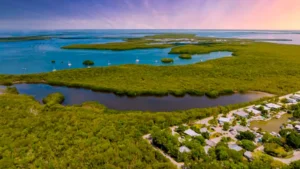

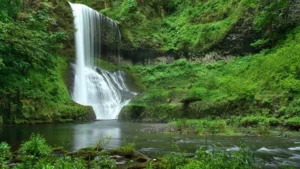
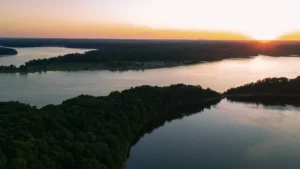


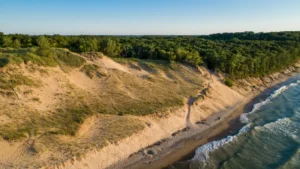
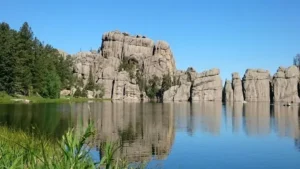
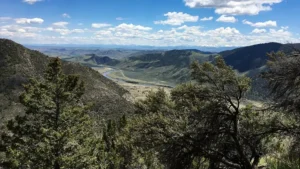

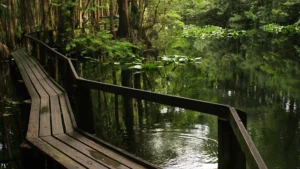
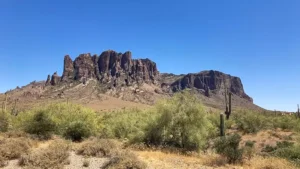
Leave your comment